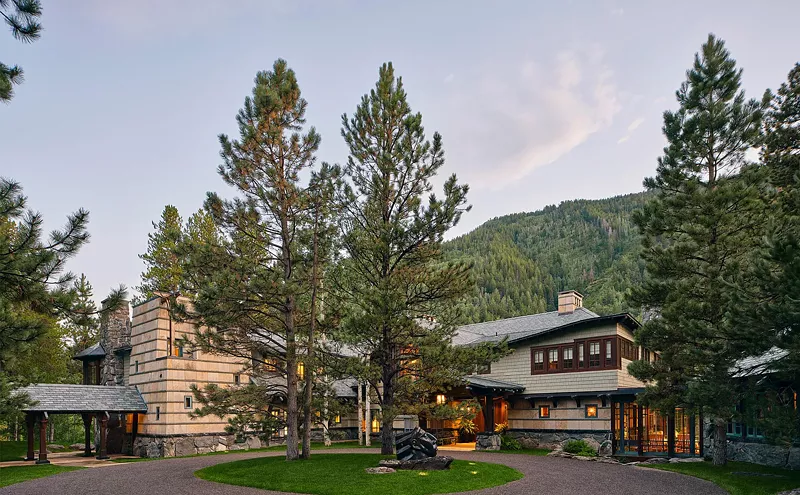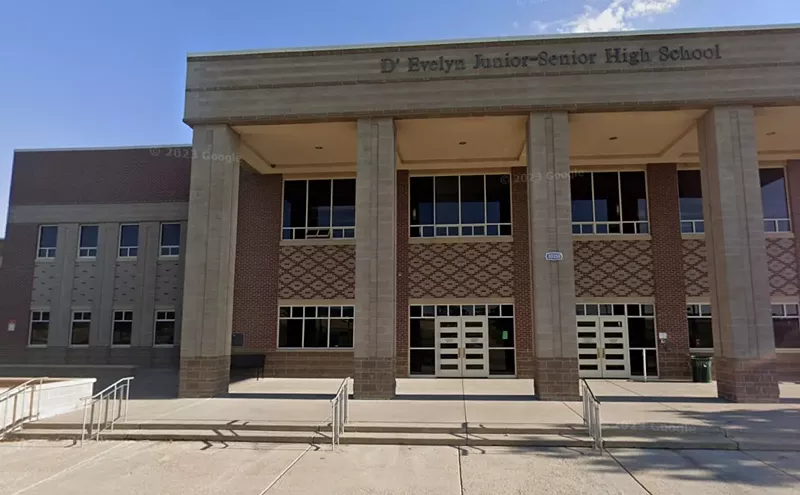It's been a tough winter for many Colorado ski areas. Until recently, the central and northern mountains were starved for snow; meanwhile, the southern mountains were seeing more than their fair share, going against pre-season predictions. But these flip-flops in forecasts and surprise storm patterns may become more common in the future. A 2008 report by the Western Water Assessment showed that statewide temperatures across Colorado had increased by two degrees since 1977 — a substantial warmup that's continuing to affect ski areas.
"The impacts of climate change are going to differ from region to region, but across the board, research is indicating a shortening of the ski season due to rising average temperatures and a reduction in snowfall," says Natalie Ooi, head of the Ski Area Management department at Colorado State University.
The National Integrated Drought Information System had long focused its work on the effects of climate change on the agriculture and ranching industries in the Intermountain West. But after the Outdoor Industry of America released a report in 2017 noting its economic impact, the NIDIS decided to expand its scope. Realizing that the outdoors industry could benefit from its services, NIDIS put out a call for research proposals.
The Colorado Climate Center, a state office housed at CSU that tracks the weather in Colorado with the goal of monitoring the climate, answered that call. Working with CSU's Ski Area Management program, CCC came up with a proposal to study the effects of climate change on ski areas. NIDIS approved the project, and last year Ooi and the CCC conducted research at several Colorado ski areas to gain a better understanding of how their near and long-term decisions are influenced by climate change, and how data can be better curated better so that ski area management can prepare for a changing atmosphere.They plan to continue with that work.
“What we are hoping in terms of next steps for this project is that we will be able to bring together a range of weather, climate and drought information sources into one spot and create various dashboards to guide short-, medium- and long-term decision-making,” explains Ooi, who is also an assistant professor in the Department of Human Dimensions of Natural Resources and the program director of Tourism Enterprise Programs at CSU. This dashboard would be utilized by ski areas, but would also be available to the public.
“This will ensure that decisions made are informed by science and can help them better understand how to deploy limited resources both within and across seasons in the most effective manner,” Ooi adds.
Through their research, Ooi and the CCC determined that ski areas have varying levels of climate interest: Some ski area managers are skeptical of weather forecasts, while some do not use the forecasts to their full extent. On top of that, the topic of climate change has become so politicized in the United States that at times it's difficult to engage with locals on the subject.
While Aspen Snowmass didn't participate in this particular research project, it already has a robust sustainability initiative looking at the effects of climate change on the environment. “The key impacts — heat, drought and shorter seasons — will result in the industry failing. It’s arguably already happening, and it’s coming far faster than industry leaders believe,” explains Auden Schendler, the senior vice president of Sustainability for Aspen Snowmass.
Although the CCC study is new, ski area concerns about climate change are not. “We’ve been thinking about this for twenty years, and it’s all playing out precisely as the science said it would — but slightly worse,” says Schendler. “The ski business is going to become unviable, and it’s going to happen from a few directions. First you’ll see smaller, regional, lower-elevation resorts going out of business due to heat. It’s already happening. Second, even big, established resorts are going to see their season crimped — later start, earlier end. Lastly, you’re also going to see more frequent dry years, like we’re having now and had two years ago.”
Hotter temperatures and less snow already have mountain resorts interested in attracting guests outside of the winter season. “Ski areas have been investing in summer and fall tourism offerings to attract and diversify their markets across seasons,” notes Ooi.
As ski areas improve the environmental sustainability of their operations by creating energy-efficient snowmaking systems and implementing other initiatives, not only will their carbon footprint be smaller, but the financial sustainability of the business will be improved. But will that be enough?
“Even if all ski areas all of a sudden become carbon-neutral, it would not be enough to stem the effects of climate change," Ooi cautions. "However, ski areas are very visible, and people pay attention when there is no snow. This provides ski areas with a unique opportunity to be spokespeople and influencers and encourage dialogue on climate change and the importance of ‘protecting our winters.'”













